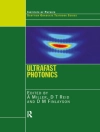Spacecraft require electrical energy. This energy must be available in the outer reaches of the solar system where sunlight is very faint. It must be available through lunar nights that last for 14 days, through long periods of dark and cold at the higher latitudes on Mars, and in high-radiation fields such as those around Jupiter. Radioisotope power systems (RPSs) are the only available power source that can operate unconstrained in these environments for the long periods of time needed to accomplish many missions, and plutonium-238 (238Pu) is the only practical isotope for fueling them.Plutonium-238 does not occur in nature. The committee does not believe that there is any additional 238Pu (or any operational 238Pu production facilities) available anywhere in the world.The total amount of 238Pu available for NASA is fixed, and essentially all of it is already dedicated to support several pending missionsthe Mars Science Laboratory, Discovery 12, the Outer Planets Flagship 1 (OPF 1), and (perhaps) a small number of additional missions with a very small demand for 238Pu. If the status quo persists, the United States will not be able to provide RPSs for any subsequent missions.
Aeronautics and Space Engineering Board & Division on Engineering and Physical Sciences
Radioisotope Power Systems [PDF ebook]
An Imperative for Maintaining U.S. Leadership in Space Exploration
Radioisotope Power Systems [PDF ebook]
An Imperative for Maintaining U.S. Leadership in Space Exploration
Придбайте цю електронну книгу та отримайте ще 1 БЕЗКОШТОВНО!
Мова Англійська ● Формат PDF ● Сторінки 68 ● ISBN 9780309138581 ● Видавець National Academies Press ● Опубліковано 2009 ● Завантажувані 3 разів ● Валюта EUR ● Посвідчення особи 7141333 ● Захист від копіювання Adobe DRM
Потрібен читач електронних книг, що підтримує DRM












